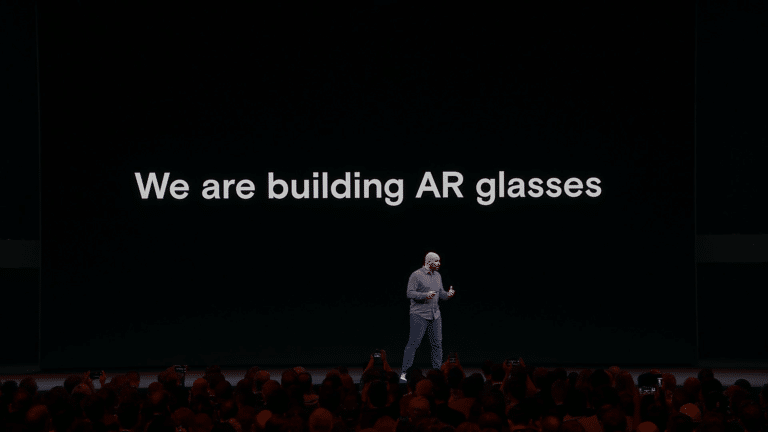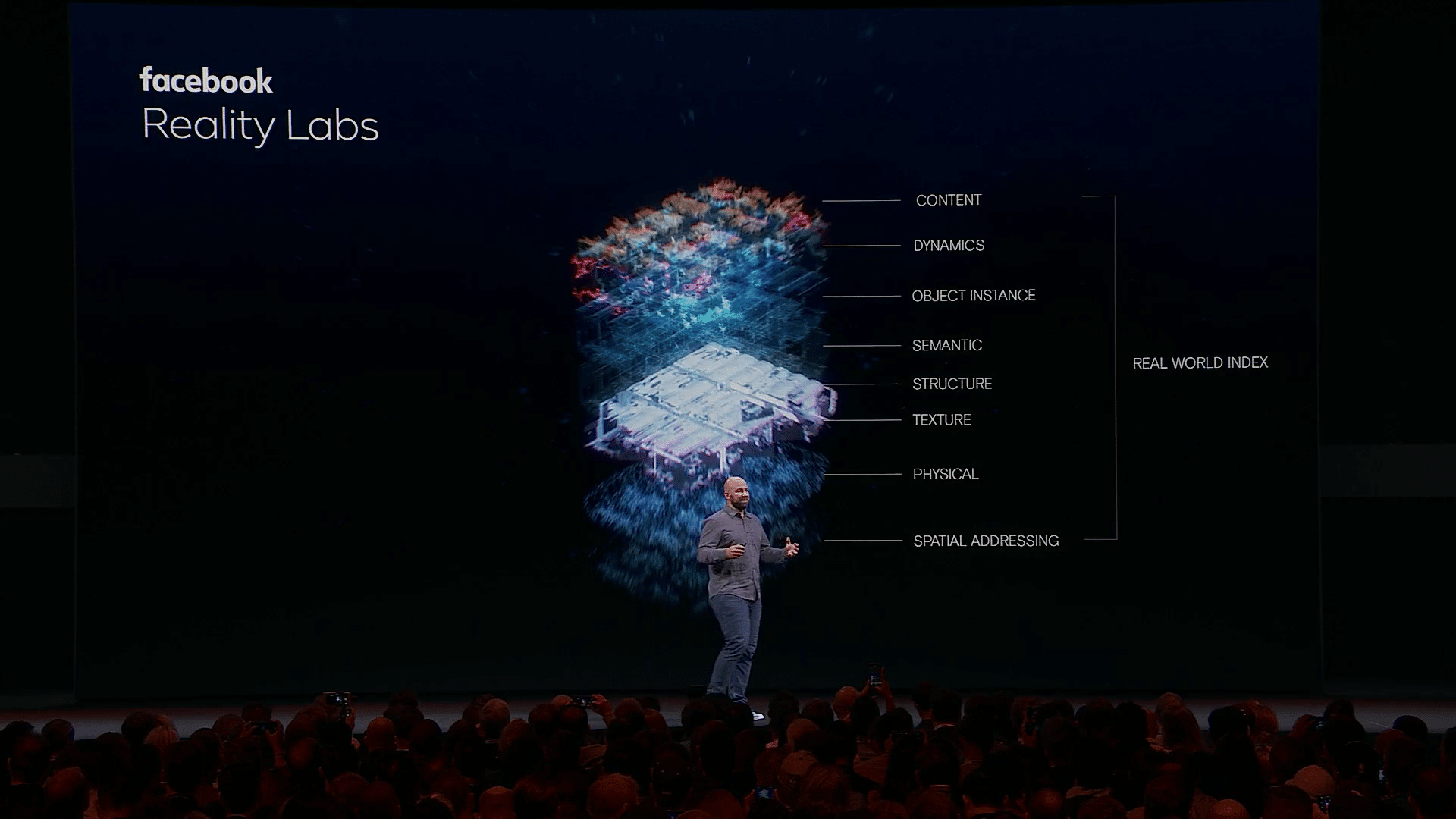
“Trendline” is AR Insider’s series that examines trends and events in spatial computing, and their strategic implications. For an indexed library of spatial computing insights, data, reports and multimedia, subscribe to ARtillery PRO.
AR Insider readers know that one of our favorite pastimes is to follow the money. AR industry directions can be extrapolated from the motivations, and outright investments, of influential tech giants. Having a sense of that trajectory can help AR players “skate to where the puck is going.”
In that light, one important indicator, and confidence signal in AR is the magnitude of commitment that’s indicated by sheer R&D spending. We’ve generally stated “tens of billions” for the collective investment scale of the big five — Facebook, Google, Amazon, Microsoft and Apple.
But our standards of precision are higher, and you deserve better. So we’ve been perpetually assembling clues to pinpoint these spending levels. Similarly, our friend and partner Jason McDowall at The AR Show recently applied some rigor to estimate Facebook’s XR investment.

Straight to the Source
On The AR Show’s annual projections episode, McDowall presented his research from Facebook 10-K filings, showing an R&D spending inflection. More importantly, this aligns with the timeframe that followed its 2014 Oculus acquisition. He separately broke down the math for us as follows.
Given the acquisition close date of July 2014, Facebook’s Q3 R&D spend was $.608 billion. This can be annualized at $2.4 billion for a representative baseline of pre-Oculus spending. Q4 2014 R&D spend increased to $1.1 billion, annualized at $4.4 billion for a more conservative baseline.
Where it gets more interesting is panning back to a longer time period in which R&D efforts had time to gear up, including Oculus Reality Labs in Seattle, led by Michael Abrash. Most recently, Q4 2019 shows a quarterly R&D spend of $3.55 billion, which can be annualized at $14.19 billion.
This is a $9.8 billion delta in annual R&D spend between the pre-Oculus (conservative) baseline and 2019. This applies annualized quarterly figures due to the mid-year acquisition, but McDowall explains that full-year actuals between ’14 and ’19 show a comparable $9.91 billion delta.
So the $10 billion question is how much of that difference is attributed to spatial computing? The standard line applies that correlation doesn’t equal causation, but the alignment in timing is thought-provoking. McDowall wagers, and so do we, that the $10 billion is dominated by XR.
From the episode:
“Because augmented reality smart glasses represent the next transformational shift in personal computing, a lot of major companies are standing up and taking notice. When I consider that the market capitalization of the top five incumbent personal computing companies is four and a half-trillion dollars, it becomes more clear why so many are willing to spend billions on the hope of maintaining or becoming the next major tech empire. Apple, Microsoft, Facebook, Google, Snap and Qualcomm are all making significant investments. Just to pick one example here, Facebook’s R&D budget went from an annual run rate of $4 billion a year after the Oculus acquisition to over $14 billion a year in 2019. With a majority of that growth in the last two years, that’s nearly $10 billion new R&D spending every year and I wager the vast majority of that growth is related to AR and VR research […] On the hardware side, a lot of momentum was established or announced in 2019. Facebook explicitly stated they’re making smart glasses as well as their own operating system for the glasses. And they recently announced a new facility in the Bay Area to house 4000 people dedicated to AR and VR. Plus they spent a billion dollars to acquire CTRL Labs, a company making a wearable sensor and software to interpret your gestures.”
Supporting Evidence
In support of McDowall’s research, it has since been revealed that Facebook’s patent grants — a correlative metric to R&D spend — have likewise spiked. Bloomberg reports that the company was granted 989 patents in 2019, a 64 percent year-over-year jump and 300 percent more than 2014.
This also notably puts Facebook in 36th place for companies granted U.S. patents. That doesn’t seem terribly notable, but it shot up 22 places from last year. It’s also worth noting that hardware companies generally rank higher on this list, such IBM — basically the Duke University of the list.
But segmenting spatial computing-related patents is where things get interesting. Compared to the above exercise, there are fewer assumptions required for the portion of the ramp-up that’s attributable to spatial. 169 patents are in the “Optical Elements” category — a 6-fold annual jump.
Even fewer assumptions are required in evaluating the fact that the majority of those 169 filings are in the ‘Heads-Up Displays’ sub-category — a catch all for headworn AR and VR hardware. And some filings are as specific as “Compact head-mounted display for artificial reality.”
Taken altogether, this is a thought exercise with some hard facts and some assumptions. Either way, it’s a valuable high-level view and trend analysis to extrapolate the scale on which Facebook is operating. One thing that’s clear is that Facebook in the lead for spatial computing investment.

Greed is Good (sometimes)
We’ll also say here that Facebook’s investment levels are a good thing, and it deserves credit for accelerating the market. After a turbulent few years for the company around data collection, it deserves a pat on the back where and when it’s due. We believe that this is one of those times.
Yes, its XR investments are self-serving in that it’s building towards and accelerating a spatial future where its platform sits at the center. But the sheer magnitude of risk is commendable. And its long-run platform strategy will radiate lots of success for startups and ecosystem players.
One of the benefits of that long-term approach can already be seen in a way that impacts consumers directly. Its loss-leader pricing on Oculus Go and Quest to accelerate a network effect — which can be viewed as a financial investment in itself — is tantamount to consumer value.
“This is Facebook accelerating adoption by subsidizing and selling these at very little margin,” said Tested’s Jeremy Williams. “That’s something the competitors can’t necessarily do, but we as consumers can take advantage of it. This is a device that probably shouldn’t exist at this price.”
Much of this could be controversial in the era of Facebook shaming and schadenfreude. But we’ll give credit where its due. Economic development should continue to flow from Facebook’s AR investments, including a massive Bay Area R&D facility. We’ll keep following the money.
For deeper XR data and intelligence, join ARtillery PRO and subscribe to the free AR Insider Weekly newsletter.
Disclosure: AR Insider has no financial stake in the companies mentioned in this post, nor received payment for its production. Disclosure and ethics policy can be seen here.
Header Image Credit: Facebook, YoutTube

